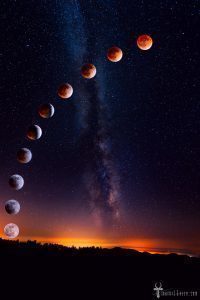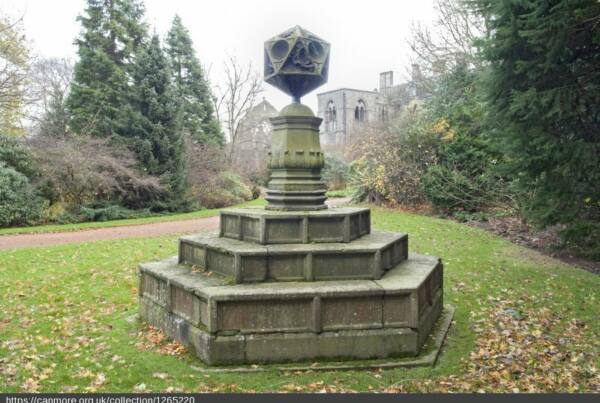 On the night of Friday 27th July those of us living in Europe will be treated to the longest total lunar eclipse of the 21st Century, a remarkable 1hour and 43 minutes. Coincidentally Mars will be at its closest distance to Earth in 15 years. If conditions are clear, the Red Planet could also be seen by the naked eye too.
On the night of Friday 27th July those of us living in Europe will be treated to the longest total lunar eclipse of the 21st Century, a remarkable 1hour and 43 minutes. Coincidentally Mars will be at its closest distance to Earth in 15 years. If conditions are clear, the Red Planet could also be seen by the naked eye too.
What is a total lunar eclipse?
The moon does not emit its own light, it shines because its surface reflects the Sun’s rays. A lunar eclipse occurs when the earth’s shadow blocks the Sun’s rays, causing it to appear temporarily darkened.
A total lunar eclipse takes place when there is a Full Moon and the Sun, Earth and Moon are aligned to form a line. Earth casts a shadow across the whole of the Moon blocking any direct sunlight from reaching it. The Moon can also turn red, otherwise known as a Blood Moon.
Why does the moon turn red?
The layer of air surrounding our planet is made up of different gases, water droplets and dust particles. When sunlight enters the Earth’s atmosphere it strikes the particles that are smaller than the light’s wavelengths, getting scattered into different directions. However, not all colours in the light spectrum are equally scattered. Only the longer wavelengths, like red and orange pass through the atmosphere and it is this light that is bent or refracted around Earth hitting the surface of the Moon, which gives it the reddish-orange glow that lunar eclipses are famous for.
Did you miss it?
Don’t worry if you miss this total Lunar Eclipse the next one is 20-21st January 2019. Though we doubt this one will last as long!






